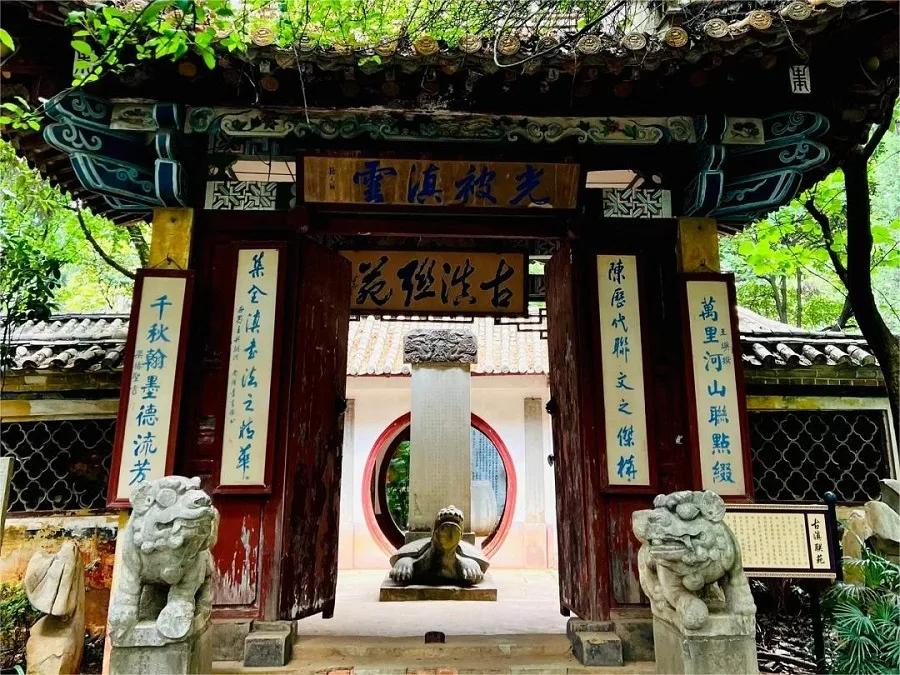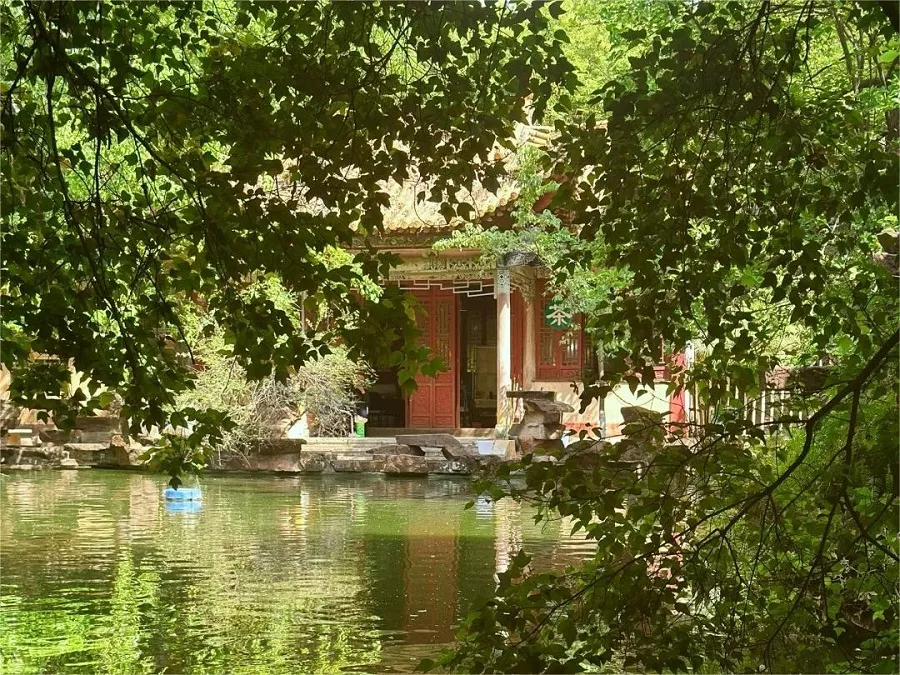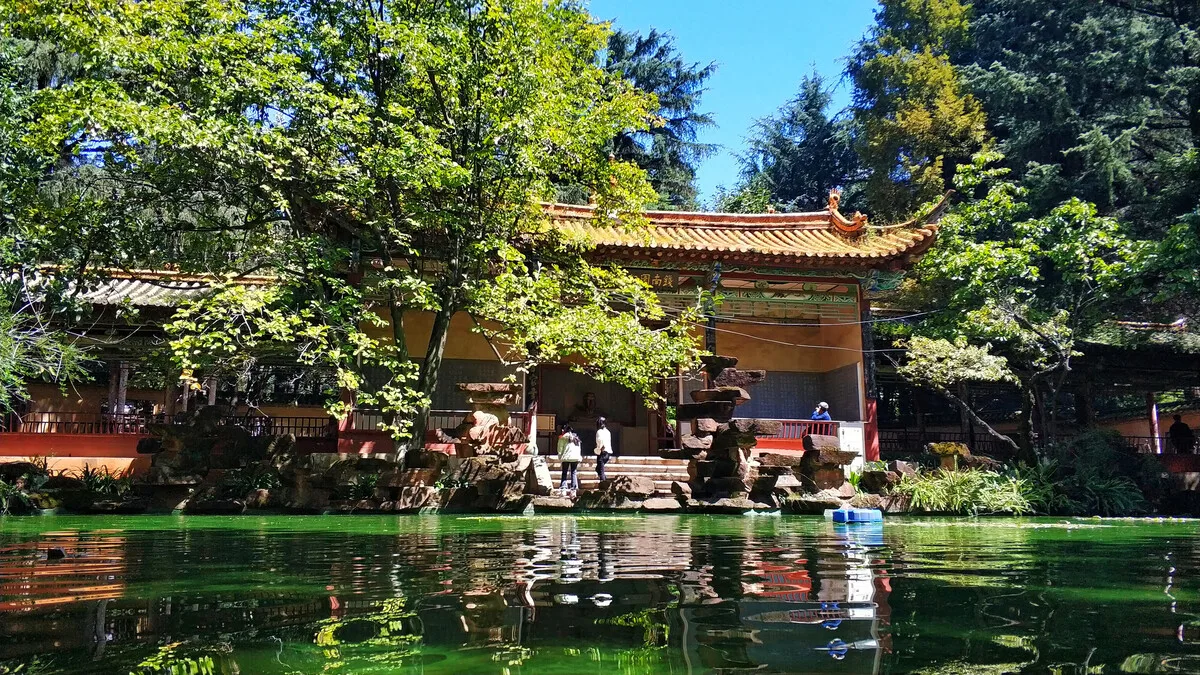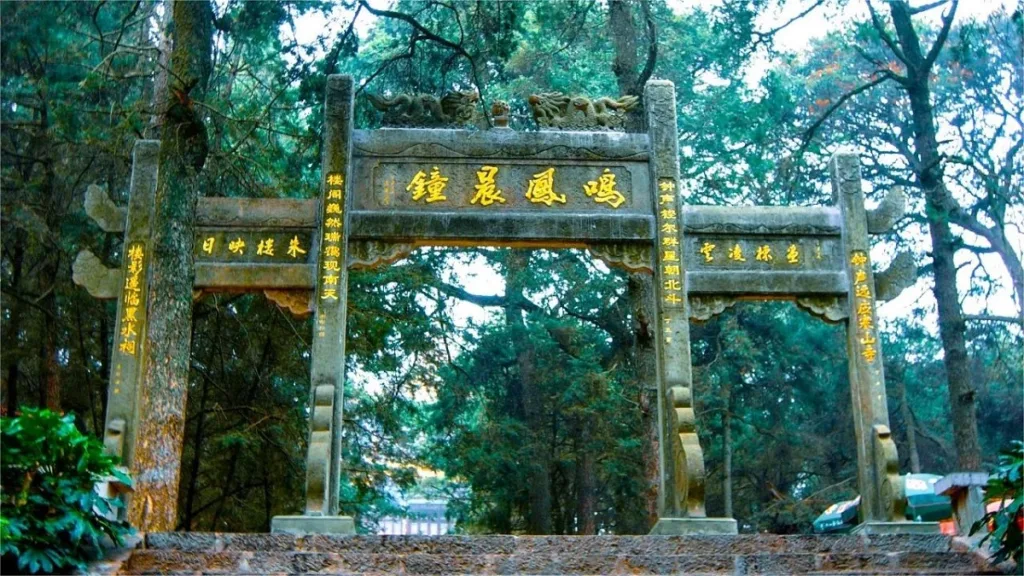Tanhua Temple (昙华寺), originally the villa of Shi Shiqiao, a high-ranking official during the Ming Dynasty, was donated and converted into a temple by his great-grandson, Shi Taiwei, during the Chongzhen era (1628-1644). It underwent reconstruction after an earthquake during the Daoguang period of the Qing Dynasty (1821-1850). The temple derives its name from the legendary Udumbara tree, believed to have originated from India (actually the Yunnan Magnolia, with an age of over 300 years).
Tanhua Temple has been renowned for its splendid flowers and trees throughout its history. In the early Republic of China, the abbot Ying Kong was known for his skill in horticulture, earning the temple the reputation of having “ever-blooming flowers and thriving trees throughout the four seasons.” Flowers such as peonies, spring orchids, snow orchids, tiger head orchids, Burmese cassia, and hanging thread orchids, once famous, now continue to attract tourists from both domestic and international origins. Covering an area similar to that of Yuantong Temple, Tanhua Temple, however, features more delicate and exquisite architecture compared to the grandeur of Yuantong Temple.
Table of Contents
- Basic Information
- Location and Transportation
- Highlights of Tanhua Temple
- Vlog about Tanhua Temple
- Attractions near Tanhua Temple
Basic Information
| Estimated Leng | 1 – 2 hours |
| Ticket Price | Free |
| Opening Hours | 7.30 – 17.30; Last admission: 17.30 |
Location and Transportation
Tanhua Temple is situated at the foot of Jinma Mountain in the eastern suburbs of Kunming City, Yunnan Province, along the banks of the Jinzhi River. Its specific address is No. 533, Tanhua Road. To get there, you can take bus 132 or Z99 and get off at Tanhua Temple Stop (昙华寺站).
Highlights of Tanhua Temple
Front Courtyard

The front courtyard of Tanhua Temple occupies 1.2 hectares and faces the Jinzhi River. Its main entrance, the mountain gate, is a four-pillar structure with glazed gables and red walls enclosing scenic windows on either side. Before the gate lies a 1766-square-meter square, flanked by an 80-meter-long stone railing along the Jinzhi River. Along the central axis stand the original Guanyin Hall, Ancestral Hall, and Scripture Hall. With four courtyards, the Guanyin Hall is a three-bay structure with a glazed roof and bears a plaque reading “Tanhua Temple (昙华寺).” To the north lies the “Golden Garden,” while the south is adorned with the “Jade Garden.” The western garden features a corridor, waterside pavilion, small bridges, and lotus ponds, each presenting unique charm. The former Ancestral Hall has been repurposed as the Flower and Bird Pavilion.
Lan Mao Garden

According to legend, during the Ming Dynasty, the renowned scholar Lan Mao (1397-1476) treated the locals and planted loquat trees in the vicinity of Tanhua Temple. In commemoration, Lan Mao Garden was established at the former office and greenhouse locations. Lan Mao was a prominent phonologist and medical scholar in the early Ming Dynasty, known for works such as “Rhythm Essentials” and “Yunnan Materia Medica.” Completed on New Year’s Day in 1999, the garden features a half-body statue of Mr. Lan Mao and inscriptions of his poetry, musical theories, and pharmacological writings on the walls of the corridor. The former Scripture Hall, situated on a high platform, was renamed the “Hall of Great Virtue” and is now the Arhat Hall. The symmetrical north and south wing rooms have been repurposed as an arts and crafts service department.
Magnolia Garden

Originally a nursery for trees and shrubs, covering an area of 3.4 hectares, Magnolia Garden was expanded into the central courtyard of Tanhua Temple from 1984 to 1989. Comprising several small gardens, the Magnolia Garden features flowing streams and lotus ponds where various fish species swim, providing a picturesque scene for visitors. The area also includes the Qian Nan Garden Memorial Corridor. Mr. Qian Nan, a renowned scholar and painter during the Qing Dynasty’s Qianlong era, is said to have visited Tanhua Temple during an inspection of river floods. To the north of Magnolia Garden are two-story, four-cornered pavilions, twin pavilions, flower corridors, pavilions, and waterside pavilions, connected by winding corridors. Integrated with trees, lawns, and flowers, it exudes the charm of Jiangnan classical gardens, creating a harmonious blend of natural beauty.
Ruiying Pagoda Scenic Area

Located in the rear courtyard, spanning 3.4 hectares, the Ruiying Pagoda Scenic Area is perched above the central and front courtyards. It features attractions such as lotus ponds, lawn gardens, Ruiying Pagoda, pavilions, and Nine Dragon Teacup. At the junction of the rear and central courtyards stands the “Ruiying Scenic Spot (瑞应胜境)” monumental stone screen, engraved with poems and writings from Zhu De to Abbot Ying Kong. Beyond the screen lies the lawn garden, surrounded by flowering crabapples, Yunnan magnolias, and torch trees. During spring, the flowering crabapples bloom profusely, creating a magnificent spectacle resembling crimson clouds, while hundreds of pigeons gather on the lawn, harmoniously coexisting with humans, exemplifying the harmony between humanity and nature.
At the northern end of the rear courtyard, Ruiying Pagoda rises beside a tranquil pool. Construction of Ruiying Pagoda began in 1995 and was completed in May 1996. Standing at 48.8 meters tall, the pagoda features seven layers and eight-sided stacked spiral architecture. At the entrance of the pagoda, a stone-carved Nine Dragon Teacup with a diameter of approximately 2.2 meters and a height of 1.1 meters is displayed. From the top floor of Ruiying Pagoda, visitors can admire panoramic views of Jin Dian Bell Tower to the east, Xishan Mountain by Dian Lake to the west, the entire Kunming city to the south, and the winding Hongshan Mountain to the north, capturing the essence of the Spring City (the nickname for Kunming).





